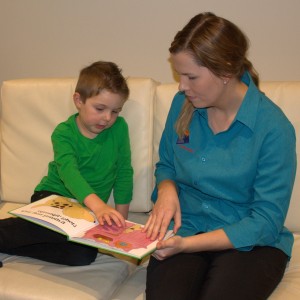 All languages have a grammar system that helps people organise information in a consistent way when they are speaking to each other. Most children naturally learn this system through talking with adults as they develop, so that by the time they are around four years old their development is almost complete and just needs a little fine tuning.
All languages have a grammar system that helps people organise information in a consistent way when they are speaking to each other. Most children naturally learn this system through talking with adults as they develop, so that by the time they are around four years old their development is almost complete and just needs a little fine tuning.
Some children however have difficulty understanding and using grammar, perhaps because of a language or learning difficulty, or because of hearing or auditory processing difficulties. This can impact on their ability to understand what others are saying and their ability to communicate effectively. Later on it can effect reading, written language and learning. Support from a speech pathologist can help children develop these important skills.
Grammar includes the way words are ordered in a sentence and the way certain words and word endings are used to modify the other words in a sentence to make the meaning clearer. For example if we take the words “dog, chase and cat” we can use grammar to make different meanings such as:
- the dog will chase the cat
- the dog chased the cat
- the dog is chasing the cat
- the dog was chased by the cat
- the dog was not chasing the cat
- will the dog chase the cat
- did the dog chase the cat
- won't the dog chase the cat.....and so on”
Children with difficulties with grammar would have difficulty understanding and forming these different sentences.
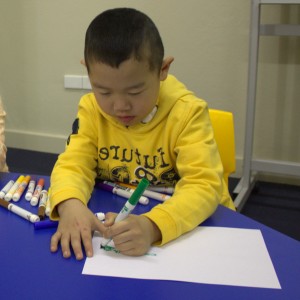 Signs that a child has difficulty with grammar include:
Signs that a child has difficulty with grammar include:
- words in sentences in the wrong order after three years “me eat no”
- words left out of sentences after three and a half years “not eat apple”
- errors in the use of regular grammar after four years (pronouns “he/she/I/they”, verb tenses “is -ing, -ed” articles “a/the”) “her running”
- errors in the use of irregular grammar after seven years (irregular plurals “mice/feet/children” and irregular verbs “went, fell, drew”) “I drawed it”
- difficulty using simple conjunctions (and, then, so) to join sentences after four years
- difficulty using complex conjunctions (because, but, when, after) to join sentences after six years
- grammatical errors or words missed out in writing after seven years.
- difficulty using simple conjunctions in writing after seven years
- difficulty using complex conjunctions in writing in middle primary school.
Children with these types of difficulties would benefit from a language assessment by a speech pathologist.
When helping children to learn to use grammar speech pathologists work though the following steps:
- Modelling: "Here is a boy. He is running".
- Comprehension: Look at these pictures and show me ‘He is running’.
- Imitation: You tell me the sentence – ‘He is running’.
- Forced Choice: Is it he or she?
- Sentence closure/expression: Who is running….
- Practice/ generalisation: Tell me about what your friend is doing.
Each step is practised until the child is confident and able to respond correctly 9 times out of 10 before moving onto the next step.
All children can do with a little hand to understand the complex language system of English. If your child needs help lots of help to develop grammar skills it is recommended you contact a speech pathologist for an assessment. You may like to look at the information and activities to help develop some common grammatical structures which can be downloaded from the downloads section of Our website. This is however aim at supporting work done with a speech pathologist and is not intended to replace professional therapy.
Some techniques you can use as part of your daily activities to help children develop grammar skills include:
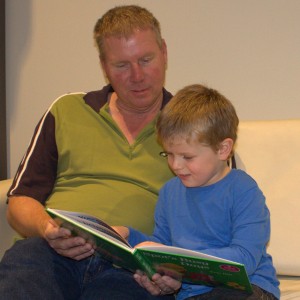 1. Modelling. This involves showing the child how to use a word or sentence structure correctly by giving the child lots of examples as you talk together. “Look, he is a boy, he is running, he is running up the hill, he has a kite, he is flying the kite”. The child does not need to repeat you, just hear lots of examples of how the word is used correctly. You can emphasis the modelled word a little but keep it sounding friendly and natural.
1. Modelling. This involves showing the child how to use a word or sentence structure correctly by giving the child lots of examples as you talk together. “Look, he is a boy, he is running, he is running up the hill, he has a kite, he is flying the kite”. The child does not need to repeat you, just hear lots of examples of how the word is used correctly. You can emphasis the modelled word a little but keep it sounding friendly and natural.
2. Recasting. This is when you take a sentence that the child has said incorrectly and change it to the correct form. Child “look him is running”, adult “yes, he is running” Recasting should be done in a positive and natural way and can be followed by some extra modelling of similar sentences.
3. Fixed up ones routine. This is based on the work of Caroline Bowen and aims to show the child how to self monitor and correct their own communication. First the adult makes a mistake in their own speech and “fixes it”. Look him is running, ooops I meant to say “he is running” I had to fix up that one”. Later the adult can cue the child “oops can you fix up that one” when the child makes the error.
Two of the most commonly misused grammatical markers for preschool children are pronouns and plurals. There are some ways that parents, teachers and carers can help children learn to use these correctly.
Pronouns stand in place of a noun, but they also give us information about the thing they represent, such as its gender (he/she/it) or its number (I/we/you/us). Possessive pronouns tell us about who an item belongs to (his/hers/its). The issue of gender can be confusing to children with language problems and they may use “he” for “she”, “him” for “her”, or play it safe and use “it” for everyone. Pronouns also change in relation to where they occur in a sentence such as “she gave it to her” or “I want it, give it to me”. This too can be confusing for children with language difficulties.
Try these activities to practice pronouns with your child:
4. Face sort: Collect lots of pictures of male and female faces from magazines, catalogues and clip art. Spread the pictures face down on the table. Turn the pictures over one by one and sort them into a pile of males and a pile of females. As you sort work through each of the above steps, starting with modeling “he is a boy/man” or “she is a girl/woman” for each picture. Remember to give lots of practice at each step before moving on to the next step.
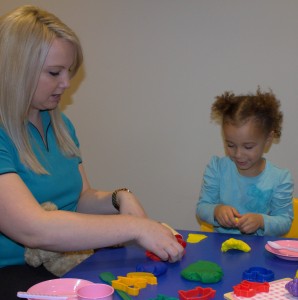 5. Tea party: Collect some toys which are clearly male or female, such as dolls and action figures. Place them around in a circle and put a plate in front of each of them. Use plastic food, real food or cut out pictures of food and serve it to the toys. Work though the steps above as you hand out the food. “He wants an apple. She wants a strawberry.”
5. Tea party: Collect some toys which are clearly male or female, such as dolls and action figures. Place them around in a circle and put a plate in front of each of them. Use plastic food, real food or cut out pictures of food and serve it to the toys. Work though the steps above as you hand out the food. “He wants an apple. She wants a strawberry.”
6. Simon says “action”: Using your male and female toys from the above activity sit them down and tell your child the toys will play “Simon says”. They must listen very carefully and only do something when they are told. Give instructions using pronouns “Simon says he can jump”. Help your child to make the correct toy do the action. Work through the steps until your child can give the instructions themselves using the correct pronoun.
7. He/she guess who: Use your pictures from the sorting activity and place them face up on the table. Hide a coin, counter or sticker under one of the pictures. Give your child some clues such as “he has brown hair” or “she has a red hat”. See if your child can find the person you have chosen, then let your child have a turn for you to guess.
You can modify these activities to work on him/her, his/hers, himself/herself and they/them.
8. Developing use of “I”: Working on “I” is difficult. Most parents have had the frustrating conversation with a preschooler that goes “Me did it” “No I did it” “No not you, me did it”. One way to work on “I” is to model it, while talking about yourself. Look at some pictures of people doing different things and say “I can run, can you?” Encourage your child to respond “I can too”. Repeat this lots of times with different action pictures.
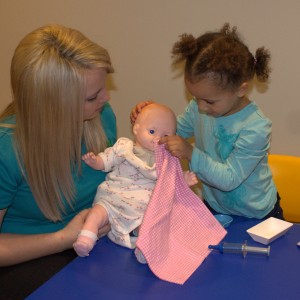 Plurals tell us about the number of items. In English regular plurals are shown by adding an “s” to the ends of words, such as frogs, dogs, cats. Children with hearing loss or middle ear problems may find these soft sounds at the ends of words hard to hear, and children with speech problems may find them hard to say. This can affect their ability to use these structures later on.Irregular plurals include words such as “lots of sheep, feet, children, women etc” Because these do not follow the “s” rule described above children take longer to learn them and they can be particularly difficult for children with language difficulties.
Plurals tell us about the number of items. In English regular plurals are shown by adding an “s” to the ends of words, such as frogs, dogs, cats. Children with hearing loss or middle ear problems may find these soft sounds at the ends of words hard to hear, and children with speech problems may find them hard to say. This can affect their ability to use these structures later on.Irregular plurals include words such as “lots of sheep, feet, children, women etc” Because these do not follow the “s” rule described above children take longer to learn them and they can be particularly difficult for children with language difficulties.
Try these activities to develop plurals with your child.
9. Memory match: Use a set of cards with two pictures of each item. Play a memory matching game naming each picture as you turn it over “one car” and when you make a match “two cars”.
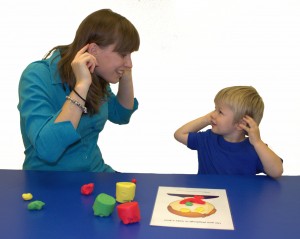 10. Simon says one or two: This activity needs no materials and helps your child to listen very carefully and understand plurals. Ask your child to listen very carefully and give your child instructions including one or two body parts such as “Simon says touch your ear” or “touch your ears” “wiggle your finger” “tap your knees” etc. Children are “out” if they do not listen carefully to what Simon says. Let your child be Simon and see if they can trick you.
10. Simon says one or two: This activity needs no materials and helps your child to listen very carefully and understand plurals. Ask your child to listen very carefully and give your child instructions including one or two body parts such as “Simon says touch your ear” or “touch your ears” “wiggle your finger” “tap your knees” etc. Children are “out” if they do not listen carefully to what Simon says. Let your child be Simon and see if they can trick you.
11. Feely bag pairs: Put a number of pairs of items into a bag or pillowcase. Help your child to put their hand into the bag and feel around to find two matching items then say “I found two..”.
12. Printing and stamping: Use stamps, stickers or printing activities to practice plurals, count and say the names of the shapes as you stamp or print; “one circle, two circles, three circles…”
Irregular plurals: by choosing appropriate pictures or objects you can use the above activities to practice irregular plurals. Some words to include are:mice, sheep, children, feet, teeth, fish, men, women, policemen, thieves, elves, people, deer, leaves, knives, shelves, wolves, geese, halves, loaves, die (plural of dice), calves.
Verb tenses are also commonly misused. Verb tenses modify a verb to give us information about time, such as whether action occurred in the past, present or future (the dog will jump/is jumping/jumped). They also give us information about who is doing the action (he runs, she runs, I run, you run, they run).
Irregular verbs do not follow the pattern of the other verbs. Children typically develop these later than regular verbs and may still be learning to use them correctly in the early years of school. Passive verbs change the order of the sentence so that the person doing the action is at the end rather than the beginning of the sentence such as “the girl pushed the boy” becoming “the boy was pushed by the girl. These also can be confusing for children with language difficulties.
Try these activities to practice verb tenses with your child:
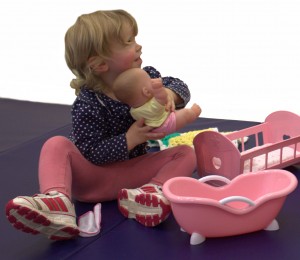 13. Act it out. Use dolls, teddies, toy farm animals or figurines or even yourself and your child to act out the verb tenses in real time. “Look at teddy, he will jump, look now he is jumping, teddy jumped, now it is dogs turn”. You can use this technique with simple actions such as clapping and jumping but also make it more fun by doing this modelling while on the playground, on a home-made obstacle course, cooking or doing craft activities.
13. Act it out. Use dolls, teddies, toy farm animals or figurines or even yourself and your child to act out the verb tenses in real time. “Look at teddy, he will jump, look now he is jumping, teddy jumped, now it is dogs turn”. You can use this technique with simple actions such as clapping and jumping but also make it more fun by doing this modelling while on the playground, on a home-made obstacle course, cooking or doing craft activities.
14. Talk about daily activities using verb tenses. Tell your child what you are going to do using future tense: “I will make a sandwich, I will get bread and jam, I will spread the jam, I will cut the bread then you will eat the sandwich”. Next talk about what you are doing as you do the activity using present tense: “I am making the sandwich, I am getting the bread, I am spreading the jam, I am cutting the sandwich, you are eating the sandwich”. Finally talk about the activity after you finished it using past tense: “I made a sandwich, I got bread, I spread it, I cut it and you ate it”.
15. Make some verb tense pictures. Use a digital camera to take photos of your child before during and after they do an activity. For example take a picture of your child holding their toothbrush, brushing their teeth and rinsing or wiping their face. Print out the pictures and place them in order on the table and model the sentences: “you will brush your teeth, you are brushing your teeth, you brushed your teeth”. Next mix the pictures up and ask your child to put them back in order and tell you the sentences.
16. Make a verb tense video. Many people now have video cameras or have video functions on their phone or iPad. Use the ideas from “act it out” or “daily activities” and record the activity in a short video. Model the verb tenses as a commentary as you do the actions so that your child can hear the words and see the action at the same time. They will love to watch videos which star their family members, their toys and themselves. Let them watch it over and over for lots of modelling and practice.
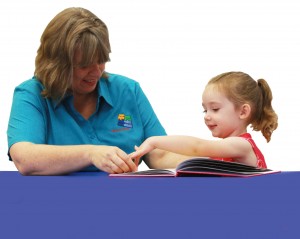
If you are concerned about your child's speech development you may wish to look at the checklist for your child's age on our website. Speech and language delays put children at risk of learning difficulties later on and early intervention is most effective. To find out more about how speech pathology can help your child's development click here.
To find out more about how the Talking Matters team can help your child click here. We provide speech pathology, occupational therapy and psychology services to children with a range of needs including autism spectrum disorders.
To find out more about Talking Matters visit us on our website, Facebook page, Twitter, or Pinterest. If you live in Adelaide and would like to discuss how Talking Matters can help your child call our friendly office staff on 08 (08) 8255 7137.
Jo Brenecki
Speech pathologist
Related Blog Posts
If you liked this post you may also like:
Taking Turns
Paint and Seek
45 School Language Strategies
The importance of play



